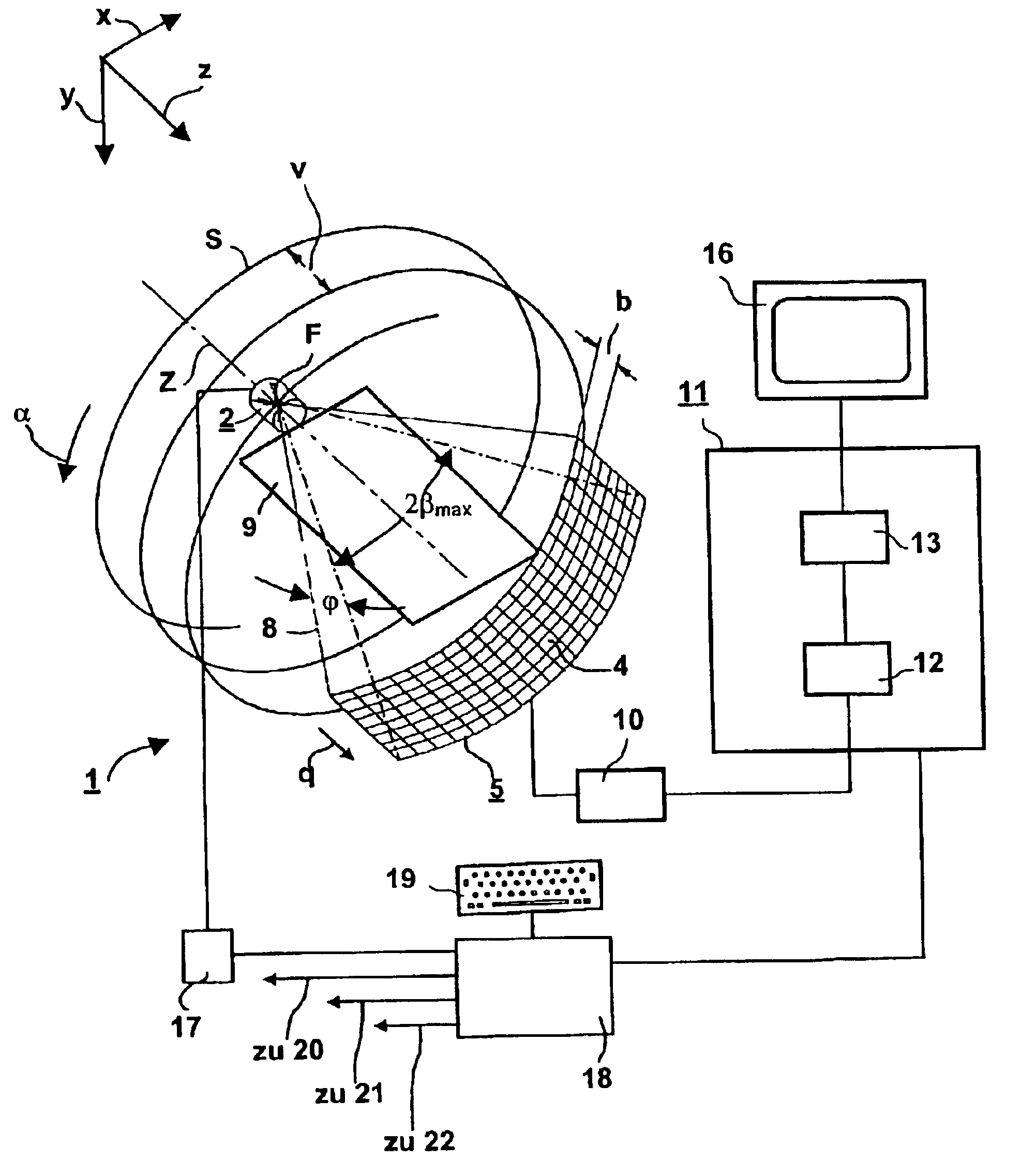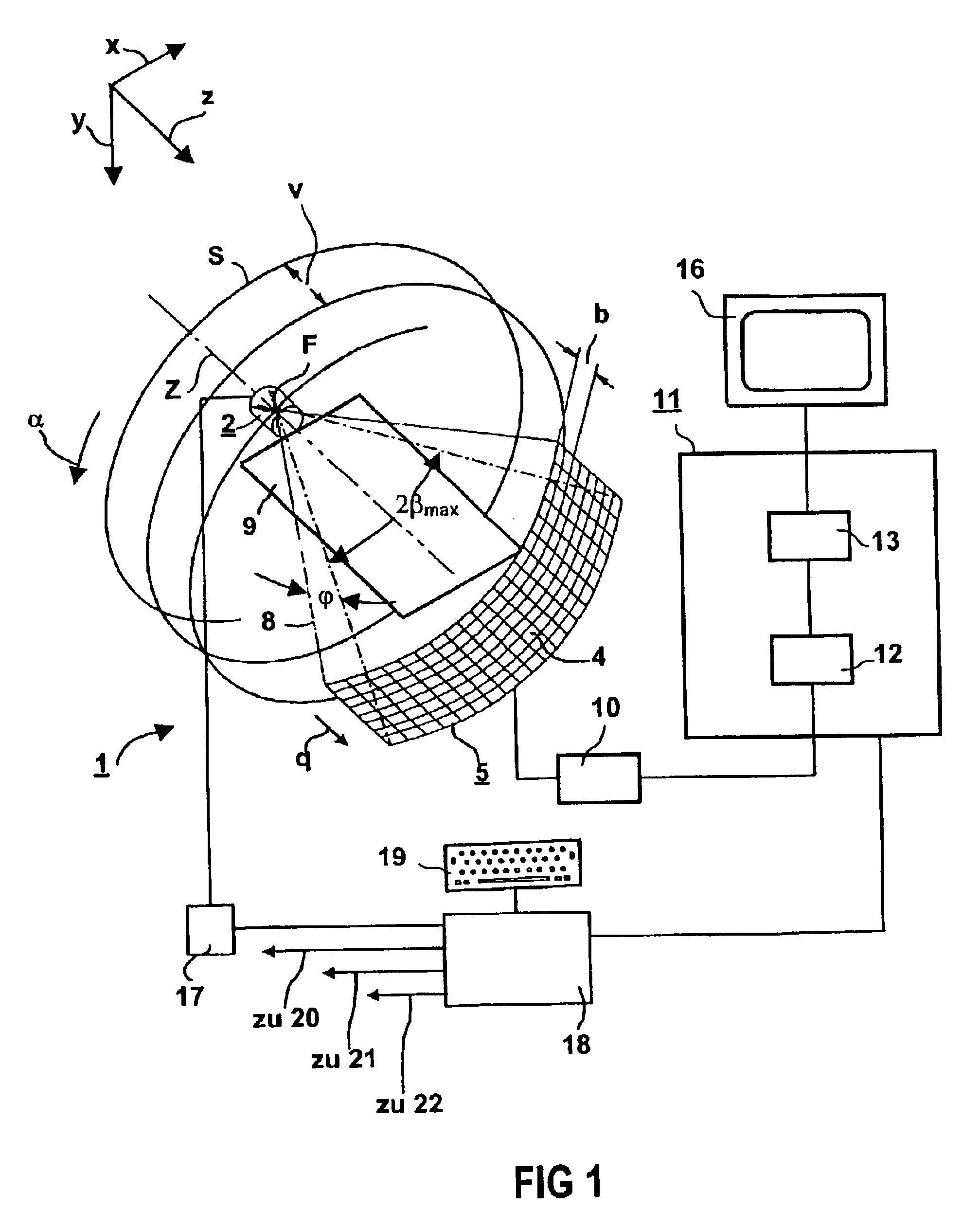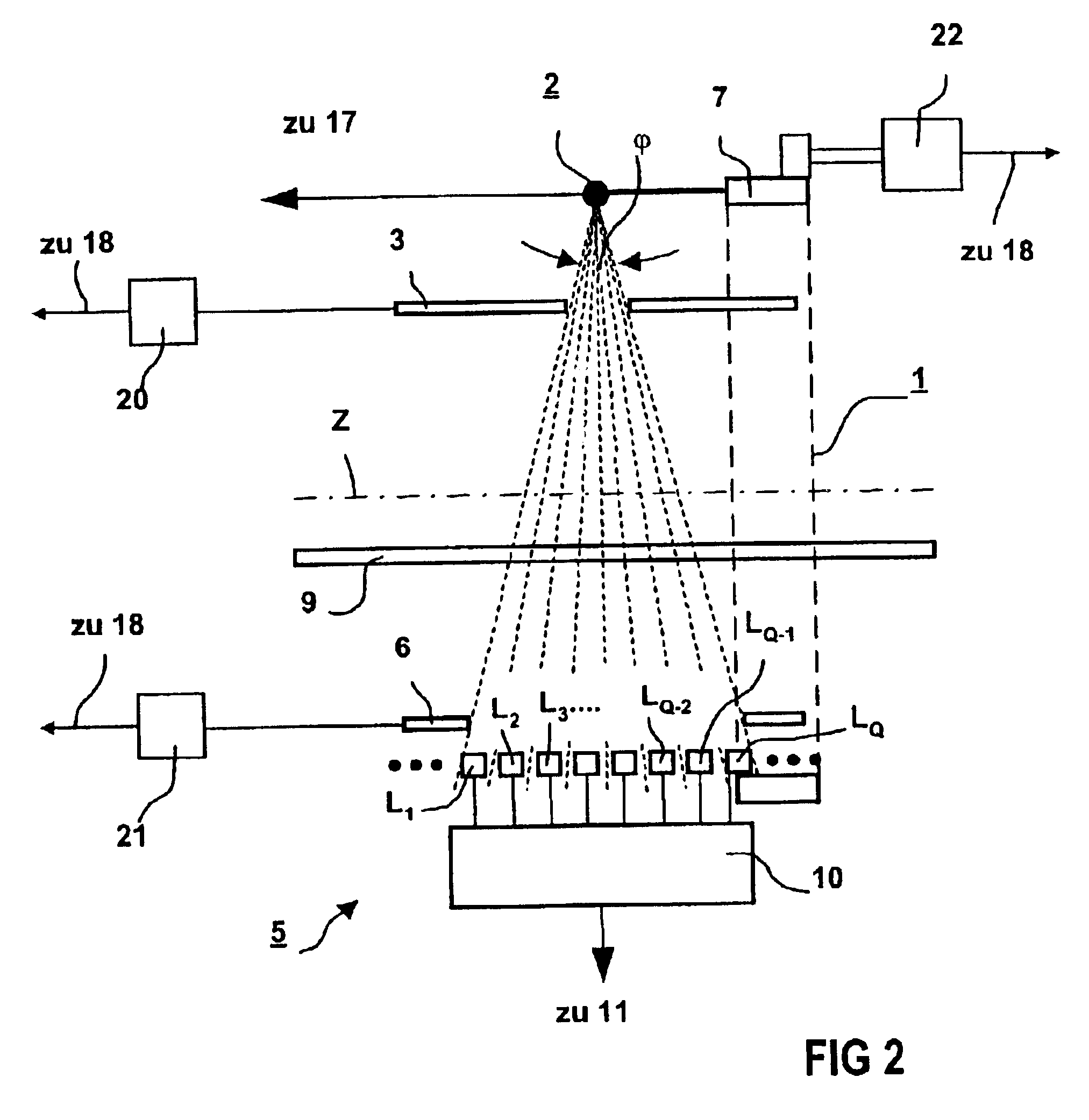Image reconstruction method for computed tomography
- Summary
- Abstract
- Description
- Claims
- Application Information
AI Technical Summary
Benefits of technology
Problems solved by technology
Method used
Image
Examples
Embodiment Construction
FIGS. 1 and 2 illustrate a third generation computed tomography (CT) device, which is suitable for carrying out a method according to an embodiment of the present invention. A measuring arrangement of the CT device, designated overall by 1, has an X-ray source, designated overall by 2, with a radiation aperture 3 (FIG. 2) placed in front of it and close to the source, and a detector system 5 constructed as a two-dimensional array of a plurality of lines and columns of detector elements—one of these is designated by 4 in FIG. 1—with a radiation aperture 6 (FIG. 2) placed in front thereof and close to the detector. In FIG. 1, for reasons of clarity, only eight lines of detector elements 4 are illustrated, but the detector system 5 has further lines of detector elements 4, which is indicated by dots in FIG. 2.
As is illustrated in FIG. 2, the X-ray source 2 with the radiation aperture 3, on the one hand, and the detector system 5 with the radiation aperture 6, on the other hand, are fit...
PUM
 Login to View More
Login to View More Abstract
Description
Claims
Application Information
 Login to View More
Login to View More - R&D
- Intellectual Property
- Life Sciences
- Materials
- Tech Scout
- Unparalleled Data Quality
- Higher Quality Content
- 60% Fewer Hallucinations
Browse by: Latest US Patents, China's latest patents, Technical Efficacy Thesaurus, Application Domain, Technology Topic, Popular Technical Reports.
© 2025 PatSnap. All rights reserved.Legal|Privacy policy|Modern Slavery Act Transparency Statement|Sitemap|About US| Contact US: help@patsnap.com



